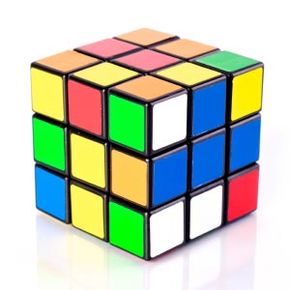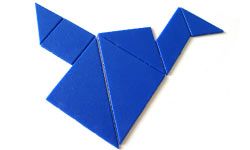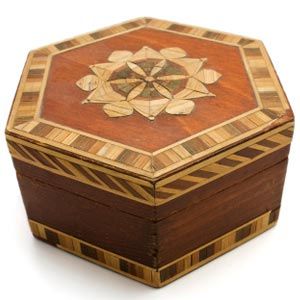Types of Sliding Puzzles
Sliding puzzles come in just about every shape and form that you can imagine. There are literally thousands of variations. Some are actual mechanical puzzles, others are computerized versions. The most basic ones require you to assemble a pattern. It could be a picture of a cat, a flower or a painting like Grant Wood's "American Gothic." The image is divided into nine sections with one section missing, the pieces scrambled in a 3-by-3 grid. Your mission is to reassemble them in the right order. Harder versions divide the picture into 25 pieces in a 5-by-5 grid.
In addition to these basic sliding puzzles, which are variations on the original 15 Puzzle, puzzle inventors have come up with some intriguing and highly challenging designs:
Advertisement
- Dad's Puzzle -- As we've seen, this slider was originally called the Pennant Puzzle. It has a large 2-by-2 square, six 1-by-2 rectangles, and two, small 1-by-1 squares. It's like moving furniture in a crowded room. The object is to shuffle the largest piece (the grand piano) from one corner to the other by sliding other pieces out of the way.
- Rush Hour -- This is an award-winning slider developed in the 1990s. The goal is to free a red car from a traffic jam by moving cars and trucks backward and forward to make space.
- Sokoban -- The name of this Japanese puzzle means "warehouse manager." In Sokoban, the player maneuvers a man around a space so that he can push boxes into the area where they belong. Because the man can't pull boxes, pushing one into a corner is a dead end -- complex and challenging.
- Quzzle -- Puzzle inventor Jim Lewis used a computer program to help invent this slider, which he claims is the hardest simple sliding puzzle to solve. A variation on Dad's Puzzle, Quzzle demands great subtlety and insight.
- Daughter in the Box -- Another Japanese sliding puzzle. The player tries to free a girl (the largest of the blocks) who is trapped in a prison of shapes. This one, too, is a more difficult version of Dad's puzzle.
- Junk's Hanoi -- Junk Kato, a master puzzle designer, came up with this deceptively simple puzzle. The player has to reverse a pyramid of blocks by moving them within a restricted space. It only uses a small number of pieces, but the solution requires a large number of moves.
New and increasingly tricky sliding puzzles are being invented all the time. At this point, it looks like slider fans will never run out of challenges.
Read on to find out the one secret that will help you to solve any sliding puzzle.



